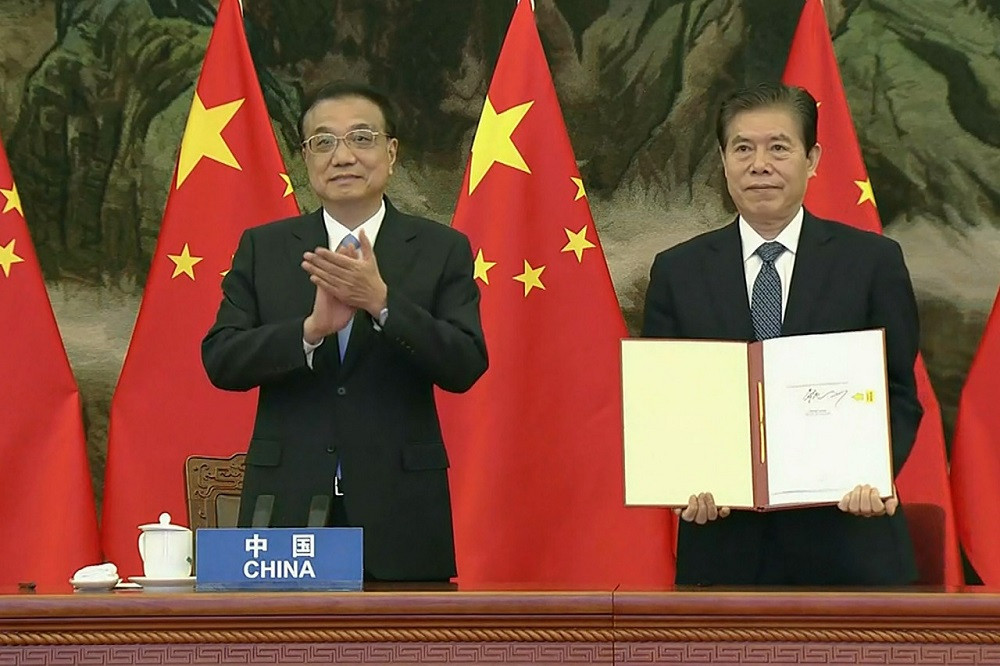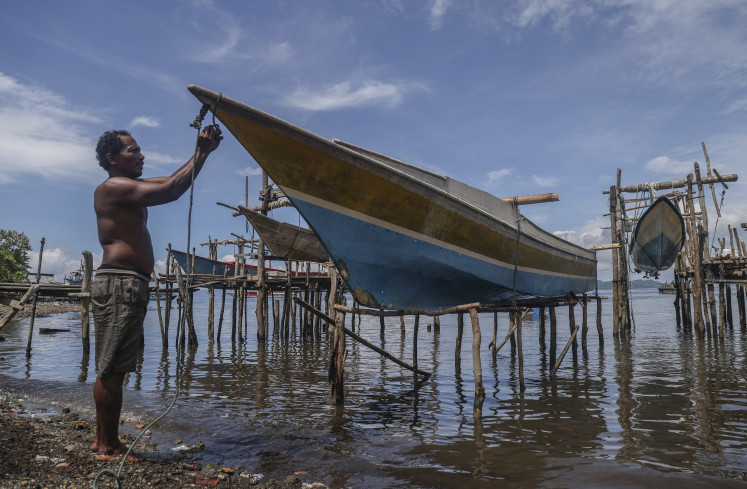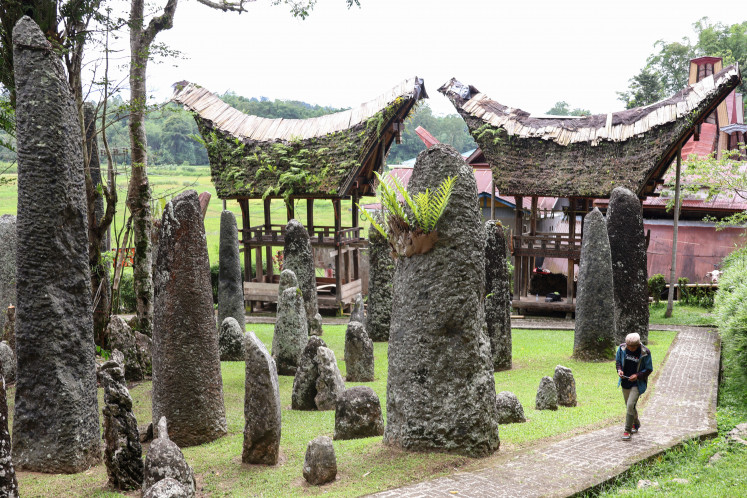Popular Reads
Top Results
Can't find what you're looking for?
View all search resultsPopular Reads
Top Results
Can't find what you're looking for?
View all search resultsRCEP: Historic milestone for ASEAN centrality
The RCEP is the most ambitious free FTA initiated by ASEAN, and one that contributes to enhancing ASEAN centrality.
Change text size
Gift Premium Articles
to Anyone
O
n Nov. 15, leaders of the 15 signatory countries in the Regional Comprehensive Economic Partnership (RCEP) held the fourth RCEP Summit via videoconference. They subsequently attended and witnessed the online signing ceremony of the RCEP. The joint leaders' statement on the free trade agreement (FTA) highly praised the signing of the historic pact.
As Chinese Premier of the State Council Li Keqiang pointed out, the signing of the RCEP represents not only a landmark achievement of East Asian regional cooperation, but also a victory for multilateralism and free trade. The signing offers a ray of light and hope to people facing the gloomy international landscape, and shows that multilateralism and free trade is the right way forward for the world economy and human civilization.
The signing of the RCEP is one of the most significant, most awaited and most exciting outcomes of the 37th ASEAN Summit and related meetings this year. It underwent eight years of arduous and intensive negotiations, overcame all difficulties and was finally signed during the summit.
The global COVID-19 outbreak has made all parties more aware of the RCEP’s great impetus and significance for promoting regional economic recovery and mutually beneficial cooperation, and has raised the sense of urgency for its timely signing.
Why is the RCEP so significant and unprecedented?
First, it is the largest FTA in the world, with a market of 2.2 billion people (almost 30 percent of the world’s population), a combined gross domestic product (GDP) of US$26.2 trillion (about 30 percent of global GDP) and nearly 28 percent of global trade. This means that the RCEP has a huge and incomparable impact on the world economy and global trading rules compared to other FTAs.
Second, the RCEP comprises a diverse mix of developed, developing and least developed economies. Its signatory countries have varying development levels, cultural backgrounds and political systems. The fact that such a variety of countries were able to unite and reach a pact demonstrates the tremendous appeal of free trade and win-win cooperation.
The RCEP is a modern, comprehensive, high-quality and mutually beneficial agreement. It contains 20 chapters and over 14,000 pages, including annexes and market access schedules. It includes areas and disciplines that were not previously covered in the existing FTAs between ASEAN and non-ASEAN countries that are now participators to the RCEP.
Aside from the specific provisions that cover trade in goods and services and investment, the RCEP also includes chapters on new areas such as intellectual property, electronic commerce, competition, small and medium enterprises, economic and technical cooperation, and government procurement.
These regional commitments will open a vast range of opportunities for businesses, facilitate the smooth flow of goods, services and personnel, form unified economic and trade rules, improve the overall business environment, reduce enterprises’ trade and operating costs, and promote the optimal allocation of resources and the rational distribution of industries within the region. At the same time, it will help provide more colorful, high-quality and less costly goods and services for the peoples of all countries and enhance their sense of gain and happiness.
In my view, the successful signing of the RCEP marks a new leap forward for the major economic and trade framework in the Asia-Pacific region. It is a major victory for multilateralism and free trade, and a major boost to regional and global economic recovery under the new normal of COVID-19.
The RCEP’s signing has given regional and global economic recovery a strong shot in the arm, set an example on a global scale, and sent a powerful message to the world: in order to defeat COVID-19 and promote recovery, we must adhere to and rely on international cooperation.
Once the RCEP enters into force, its dividends will be more visible and lasting. It will promote trade and investment growth and regional economic integration in the Asia-Pacific, strengthen the stability and connectivity of regional industrial value chains and supply chains, increase employment and spur economic growth. It will show support for the open, inclusive and rule-based multilateral trading system, boost global economic confidence, and contribute to regional and global economic recovery and development.
The RCEP is the most ambitious free FTA initiated by ASEAN, and one that contributes to enhancing ASEAN centrality in regional frameworks and to strengthening ASEAN cooperation with regional partners, including China.
Before the RCEP, ASEAN established respective 10+1 FTAs with the other five parties. ASEAN then put forward the proposal to establish the RCEP on the great vision of achieving broader regional economic integration. Over the past eight years, ASEAN has maintained its role as a leader, actively pushed the negotiation process forward, coordinated the positions of all parties and ensured the constant and sufficient momentum of negotiations.
The ASEAN Secretariat has also provided excellent assistance along the way. It was ASEAN's centrality and enormous efforts that enabled so many countries to overcome their political, economic and cultural differences to finally reach consensus.
China has always upheld ASEAN's centrality, given strong support to ASEAN and played a positive and constructive role in the RCEP negotiations. Chinese President Xi Jinping had called on all relevant parties to conclude the RCEP as soon as possible on important occasions like the China International Import Expo (CIIE), and had in-depth exchanges of views on the RCEP with the leaders of relevant countries.
Chinese Premier Li Keqiang attended the RCEP Summit for four consecutive years and expounded on China's propositions and views in promoting the early conclusion of the agreement.
China participated in all ministerial-level negotiations and technical negotiations, hosted some related meetings, and made active contributions in the spirit of promoting dialogue, cooperation and success. In the first half of this year, China completed all substantive negotiations that involved it to lead the way among the members and to lay a solid foundation for signing the RCEP as scheduled.
The opportunities accruing from the RCEP and its full potential can be realized only upon the agreement entering into force. So the priority task for all parties is to ensure that the RCEP enters into force at the earliest possible date. The RCEP will enter into force once at least six ASEAN member states and three non-ASEAN signatories have submitted their instruments of ratification, acceptance or approval with the agreement’s depositary.
As indicated in the joint leaders’ statement, the RCEP is an open and inclusive agreement. The leaders highly value India’s former role in the RCEP as one of the original participating countries, as well as its strategic importance as a regional partner in creating deeper and expanded regional value chains. In this regard, they reiterate that the RCEP remains open to India and that they would welcome India’s accession to the RCEP.
In the future, as the potential of the RCEP continues to be unleashed, it may attract more countries to take part. This would be conducive to trade and investment liberalization and facilitation in a larger scope. I also hope that the RCEP, as a major pathway, will make an important contribution to the eventual realization of the Free Trade Area of the Asia-Pacific (FTAAP).
***
The writer is ambassador of the People’s Republic of China to ASEAN.










